Physical Address
304 North Cardinal St.
Dorchester Center, MA 02124
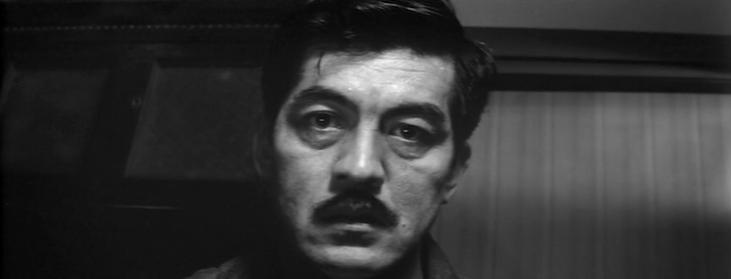
(Continued from Page 2)
For many Western film fans knowledgeable about Japanese Cinema, and perhaps for some scholars as well, the Japanese detective thriller genre is sometimes said to begin with Kurosawa’s Stray Dog (Nora inu) in 1949. But in fact, the detective film as a national genre actually preceded Kurosawa’s classic by about a quarter of a century. The short-lived Toa Kinema studio, which existed in the 1920s and early 1930s, specialized in films about crime detection that were quite different from their Western counterparts, “entailing a labyrinthine narrative structure and a predilection for psychological conflict among the increasingly fragmented elements of modern-day [1920s] society.”1 (It should be noted that these movies coincided with the relatively freewheeling Taisho/early Showa era.) Phillips argues that these early films’ emphasis on psychological and social matters influenced Uchida’s much-later work,2 which is very plausible, because Toa’s films were released during Uchida’s formative early years as a director.

Although Uchida’s silent Police Officer of 1933 is not technically a detective movie because its protagonist, Officer Itami, is merely a beat cop, it could easily be considered an honorary example of the genre, because the hero “plays detective” for a good part of the running time, after he decides to solve the bank robbery that had resulted in the wounding, and later death, of his beloved superior, Sgt. Miyabe. It could also be considered a forerunner of the modern “police procedural,” since forensic work – such as the use of fingerprint databases – is prominently featured in the course of the narrative.
Like the template of the Toa films cited above, there is a “labyrinthine narrative structure,” as well as labyrinthine physical structures through which Itami pursues (and is pursued by) members of the criminal gang he is investigating. There is also a social dimension in that the antagonist, Itami’s former school friend, Tetsuo, is a Communist who has resorted to bank robbery to fund his group’s activities.3 As we have argued in our review of Police Officer, Uchida’s film clearly seems to have strongly influenced Stray Dog, as indicated by a number of similar characters and incidents in Kurosawa’s narrative.
The release, during and immediately after the U.S. Occupation, of a number of famous Hollywood film noir classics sparked a greater demand in Japan for movies of this kind.4 But perhaps the most crucial factor in the development of the genre’s unique Japanese variant was the emergence in the 1950s of the popular writer Matsumoto Seichō, sometimes called Japan’s greatest detective novelist: “the Simenon of Japan.” Matsumoto brought a new sensibility to the Japanese crime story. A politically-engaged writer, he used genre conventions not only to expose the underbelly of a particular social milieu, which of course was nothing new in such fiction, but managed to connect what he observed to the overall situation of the nation in the immediate aftermath of the war and the American Occupation. In the process, he created what one reviewer has called the “social detective story.”5
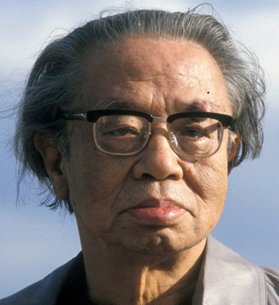
Matsumoto’s editor quoted him as saying, “motive: that’s what interests me,” and he was clearly intrigued not only by the psychology of criminals, but that of detectives, professional or otherwise. In at least two of his books, Zero Focus (Zero no shōten, 1959) and Flag in the Mist (Kiri no hata, 1961) – both of which were made into excellent films by Nomura Yoshitarō (1961) and Yamada Yoji (1965), respectively – the “detective” protagonists are quite ordinary women, in no way connected to law enforcement, who have a very personal stake in the cases they’re investigating. His subject was a society scarred by war and occupation, and he portrayed both the chaotic reality around him and the urgent need to establish some sort of order to control that chaos.
There were few things in Japan at the time more orderly than its rail system, and Phillips points out that in Matsumoto’s first novel Points and Lines (Ten to sen, 1958), which established the author’s reputation, the plot hinges on the “minutely organized details of Japan’s railway timetable.”6 (Those details are important to the plot because they reveal discrepancies in the murderer’s otherwise airtight alibi, and this becomes the only way the detectives can crack the case.) This preoccupation with train schedules carries over into the film version of the novel, also called Points and Lines (Ten to sen, 1958, directed by Kobayashi Tsuneo).7 Indeed, the last shot of the film is a close-up of the murderer’s reference book containing those tedious train schedules, which holds the key not only to the original murders, but to a final, fatal crime.

The novelist Mizukami Tsutomu was, according to Alastair Phillips, a friend of Matsumoto, and he employed the older writer’s general approach as the template for his own 1962 novel, Kiga Kaikyō.8 There is even an obvious plot connection with Points and Lines, in that a double murder in Mizukami’s book, as in Matsumoto’s, is cleverly disguised by the killer to look like a lovers’ suicide. But Mizukami was distinct from his mentor in his personal obsessions, which arose from his unusual background. As a youth, he had been a novice at various Zen Buddhist temples. He left the Zen faith to eventually become a writer, but remained haunted by Buddhist teachings. As Yomota Inuhikō writes, “ever present in the background [of his novels] looms the strong influence of the Shin Buddhist conception of humanity and salvation.”9
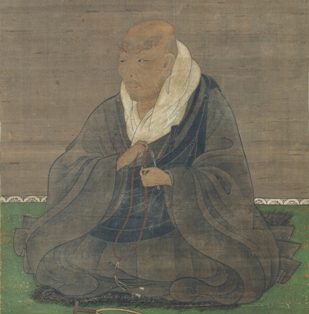
So it’s no wonder that Uchida became excited at the prospect of adapting Mizukami novel after the journalist Izawa Jun brought it to his attention. Not only did the book focus on social classes and marginalized individuals – topics that had always interested him – and not only did it expose the contradictions within Japanese society, with which he was also obsessed, it also dealt with the Buddhist themes of evanescence, guilt and suffering that increasingly preoccupied him. The movie can even be said to be his most Buddhist work.
A Fugitive from the Past – whose Japanese title is the same as that of Mizukami’s original novel, Kiga kaikyō – is a classic Japanese noir in that it acknowledges both the conventions of the detective novel and its underlying worldview: namely, that the function of the police is to restore order to a morally chaotic world. However, Uchida, at the same time, critiques and undermines both those conventions and that worldview. We’ll examine this paradox in further detail below.
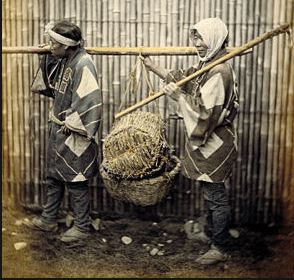
One of the most insightful articles yet written about this great film is by the Hong Kong-based filmmaker and activist Nakanishi Ryota (website here). Nakanishi claims that both the male and female protagonists of Uchida’s movie represent the “forbidden” class of Japan – the burakumin.10 This caste – though not ethnically different from other Japanese, as the oppressed zainichi (resident Koreans) are – consisted of the descendants of those Japanese who once worked in traditionally “taboo” professions, such as butchering, tanning and prostitution. In this light, both Inukai’s and Yae’s behavior makes sense in a way not fully comprehensible without this knowledge.
The key to understanding the character of the protagonist, in my view, is to answer the question: what is Inukai trying to achieve at the very beginning of the narrative? However, to come up with that answer, the viewer must perform some detective work of her/his own. The significance of what is happening can only be grasped by sorting through the few clues that Uchida and his screenwriter, Suzuki Naoyuki, have given us.
At Iwanai railway station (immediately after the narrated prologue), the escaping criminals with the stolen money arrive to meet Inukai, and he, at their insistence, buys train tickets to Hakodate for all three. At this point, the viewer can be pardoned for assuming that Inukai is acting simply as an accomplice to the killers, which would make him as culpable for the murders of the pawnbrokers as they are.
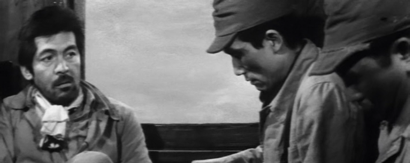
This impression is immediately undercut, however, by what happens after the three climb onto the departing train and take their seats. After Inukai gives the other two their tickets, the taller and fiercer-looking criminal, Kijima, remarks to his shorter, stockier partner, Numata, “The fire will spread quickly.” Inukai, who had apparently never connected the fire, which he’d viewed from a distance at the station, with the actions of his two companions, registers surprise. He then points out to Kijima that his hand is bleeding, and the latter licks his wound like an animal.

Numata, smiling, then produces, to Inukai’s astonishment, a carton of cigarettes – an extremely rare prize in that era – and offers Inukai a pack, which he, knowing that they are probably stolen, uneasily slides into his shirt pocket. (A bit later, Inukai’s generosity with these cigarettes towards an old woman who covets them will greatly impress Yae.) While the two ex-convicts are smoking, Numata suddenly reaches down to touch the bag of money that Kijima is carrying, and the latter brusquely brushes his hand away. At that moment, Kijima stares at Inukai, wondering how much he has guessed, as the startled Inukai, staring into space, feigns an air of nonchalance.
It can’t be emphasized enough that this brief, almost wordless scene is filmed objectively: that is, it cannot be discounted by the viewer as subjective and thus “unreliable” narration. So an important fact that should be crystal clear – though to reviewers of the film, regrettably, it usually isn’t – is that Inukai had no inkling of the Sanada robbery/murder until after it happened, and was clearly disconcerted and even frightened by his two companions’ behavior because he is not a criminal. Yet he never separated from these dangerous men, which he could fairly easily have done, but continued his escape in their company: a fatal blunder.
So if Inukai’s goal was never to rob or murder people, what was his objective? The key to a coherent interpretation of Inukai’s behavior lies in his account of his life in Hokkaido during the police interrogation in the latter half of the film. It must be kept in mind, though, that this part of the narrative, involving his personal account of his own actions, and the flashbacks accompanying them, may not always be reliable.
During his initial questioning prior to his arrest, Inukai is asked by the detectives if he had ever lived in Hokkaido, and he admits that, after having moved from the main island, Honshu, he resided in the regional capital of Kutchan on a farm called Samejima, which eventually failed. Significantly, he identifies the time when he lived there as being 1940 – “during the war with China” – when he was 20 years old. Thus, his failed attempt to “colonize” Hokkaido, a land originally settled by the Ainu people (whose oppression Uchida had earlier depicted in The Outsiders), is paralleled with Japan’s failed attempt to colonize China, which Uchida had witnessed first-hand near the end of the war.
In the interrogation following his arrest, Inukai admits to the police that he worked in a mine in Sapporo with Kijima and Numata, but only learned that the two were recently released from Abashiri prison when they all went to Asahi’s hot springs to celebrate the receipt of their wages. According to Inukai, during a conversation between the men and the pawnbroker Sasada, who was, coincidentally, also present at Asahi, the latter had promised to refer them to a friend in Hakodate who might help them find a job. This was the reason why Inukai was waiting at Iwanai Station for the train to take all three of them to Hakodate.
In several flashback images – using still photos rather than clips, a nice touch – depicting the men relaxing at Asahi, Uchida displays Inukai as clearly uneasy with, and even frightened by, his two traveling companions. So it’s clear that the only reason he was willing to accompany such unsavory characters to Hakodate was the prospect of a job.
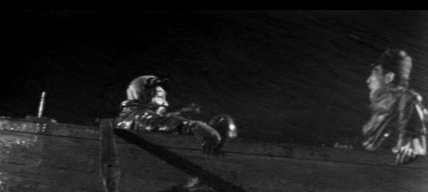
After they reach Hakodate during the typhoon, however, the convicts alter their plan. They decide to steal one of the boats used for the rescue of the ferry passengers, and row across the strait to the Honshu coast. But during this crossing (according to Inukai), Kijima attempts to murder first Numata and then himself, leading to the necessity of his killing Kijima by knocking him overboard, purely in self-defense.
Inukai admits, “Despite my efforts, my life [in Hokkaidō] had been one failure after another.” Hokkaidō thus serves, in the film, as a symbol of the collapse of Japan as a whole after the end of the war… a disaster that the protagonist is desperate to escape. Under these circumstances, it’s completely understandable that Inukai would want to leave Hokkaido behind forever, and at any cost.
It’s very significant, though, that, unlike the novel, in the film Inukai himself is not depicted as an ex-convict. Yomota Inuhikō mentions that, in the book, following the failure of the farm at Kutchan, the protagonist “becomes the agricultural leader of a pioneer town, but is sentenced to three months in jail for petty theft.”11 But in the movie, there’s no allusion to Inukai having any criminal record. If the film’s Inukai had had such a record, this fact would surely have been uncovered and revealed during the thorough investigation by the Maizuru detectives.
If we can assume, for the sake of argument, that Inukai’s story to the police is more or less accurate – and the actions of the convicts in his narrative are totally consistent with their vicious and stupid behavior earlier; indeed, it would have been out of character for Kijima not to have tried to kill Inukai to keep the money for himself – then Inukai in 1947 didn’t murder anybody, but killed only in self-defense. He didn’t even, properly speaking, steal the Sasada’s money, but appropriated the already-stolen cash, which, of course, couldn’t be returned to the Sasadas, as they were dead.
That act, as well as the theft and destruction of the rescue boat – which all together would probably have merited, at most, a few years in prison – would be the only crimes he could rightly be charged with… before, that is, his double murder of Yae and Takenaka. Note the irony that, if his story is true, Inukai only really becomes a murderer after he takes on the identity of the rich, respectable citizen, Tarumi.
When Inukai decides to keep the stolen money, one of his motivations for doing so is the conviction that if he did the proper thing and turned the cash over to the police, they’d never believe his (true) claim that he had nothing to do with the robbery and murder of the Sasadas, or the (unprovable) claim that he had killed the two convicts in self-defense. Ironically, Ajimura’s refusal to believe his confession in 1957, a full decade later, justifies Inukai’s original skepticism regarding the police. But the main reason for his fear of the authorities, as stated already, is his outcast status as a burakumin, which would automatically lead the police to disbelieve his version of events.

Inukai, far from being the monster the police assume him to be, or the angel that Yae clearly wants him to be, is a crazy quilt of good and bad traits and impulses. In that respect, he may well be the most autobiographical character in all the films of Uchida. In his commentary on the Blu-ray version of the film, cinema scholar Aaron Gerow quotes the screenwriter, Suzuki Naoyuki, as saying that Uchida told him to “share and distribute my own pain, bit by bit, with the characters in the film.”12 Gerow also mentions Suzuki’s startling claim that, for the scene in which Ajimura confronts Inukai with the fingernail that Yae had clipped from his thumb in Ōminato in 1947, Uchida had originally wanted to use his own fingernail as a prop.13 14
Although Uchida was not one of the burakumin, and certainly didn’t kill anybody, the great filmmaker, like his character, had a haunted past, stemming from his strange eight-year ordeal in China. (See, on this blog, the “China Adventure” section of the webpage A Biography on this site, as well as my previously-cited essay in the supplemental booklet for the Arrow Blu-ray release of the film.15) According to his friend and colleague, film editor Kishi Fumiko, who had shared his harsh life in Manchuria in northeast China, Uchida in the postwar period, much like Tarumi in the film, lived uneasily in luxury with a wife from whom he was emotionally estranged.16

And Uchida, also like Inukai/Tarumi, had left behind a number of wrecked lives. These were not drowned criminals or strangled prostitutes, but film industry colleagues who either never came home alive from China or, if they did, were blacklisted because of their assumed association with the Chinese Communist regime. Meanwhile Uchida, their leader, despite having worked closely with the Communists, and even taught film editing to some of them, was permitted, because of his prestigious name and his friends in the industry, to pick up his career where he left off.17 Uchida was able to draw upon the guilty memories of his wartime experience to bring greater depth to his vision of personal and social corruption in the first decade of postwar Japan.
Ironically, Inukai’s own legacy of guilt impels him to commit a crime – that is, the vicious murders of Yae and Takenaka – much worse than his original transgressions. But it’s a misinterpretation to believe that Inukai kills Yae because he’s afraid she’ll reveal his identity to the police. Yumisaka, after Inukai gives his partial confession, disdainfully points out to him that Yae would never have betrayed him. This is perfectly true, but quite beside the point. Yae is murdered not because she might have exposed Inukai to the world, but because she did expose him to himself. As Hayley Scanlon points out in her blog’s review of the film, “it’s not that Inukai fears blackmail or even really that [Yae] poses a threat, but that she shatters the integrity of his carefully crafted post-war persona and reminds him who he really is.” And “who he is” isn’t just a man who had been involved (perhaps inadvertently) in multiple killings, but a member of a despised caste – as she also is.

The plot of this movie, in which a man on the wrong side of the law forges a new life, under an assumed name, as a wealthy, respectable, self-made man, contains obvious echoes of Victor Hugo’s classic novel, Les Misérables. Hugo’s book had always been very popular in Japan, and many adaptations of it have been made there, including a lost, two-part, 1931 silent movie, Jean Valjean (Jan Barujan), directed by none other than Uchida himself. Was the close resemblance of the plot of Mizukami Tsutomu’s novel to that of a film he’d made many years ago one of the reasons that Uchida was so eager to adapt it?
However, the story Uchida tells contains a sinister, very un-Hugo-like twist. In the French novel, the former convict Jean Valjean decides to sacrifice his new life as a wealthy industrialist, under the pseudonym “Monsieur Madeleine,” to exonerate a destitute but totally innocent tramp who has been falsely identified as Valjean. Hugo’s noble hero can’t even passively allow another’s life to be forfeited for the sake of his own.18 Tarumi, on the other hand, to protect his false identity, actively destroys not one, but two lives.
While one must concede the deadly violence of this character, it must be admitted that Uchida makes Inukai far more sympathetic than the protagonist of the original novel. In the book, when Yae visits him in Maizuru, he poisons her to ensure her silence: an open-and-shut premeditated murder.19 In the film, though, it’s clear that Inukai/Tarumi, at least at first, has no intention of harming this woman whom he barely knows. His killing of her by strangulation is depicted as an unpremeditated crime of passion.
After Yae recognizes him, he cries out, like a damned soul, “My name is Tarumi! I’m not Inukai!” By killing her and then his own male secretary, Takenaka, who had unluckily caught him with Yae’s corpse, Tarumi tries vainly to lay to rest, finally and forever, the terrifying ghost of Inukai. Along with Hero of the Red-Light District, this movie best exemplifies what is perhaps Uchida’s most consistent and tragic theme: the tendency of society’s “monsters,” too weak to fight the established order, to destroy one another instead.
It’s fascinating to me that some reviewers regard Inukai as an almost Nazi-like villain. On the contrary, I believe that Inukai’s ambiguity as a character is one of the main reasons one can call this movie great. If I agreed with those commentators about Inukai’s unadulterated villainy, which would thus make the narrative a mere melodrama rather than a tragedy, I would probably not regard this film as a masterpiece, never mind one of the best Japanese movies ever made.
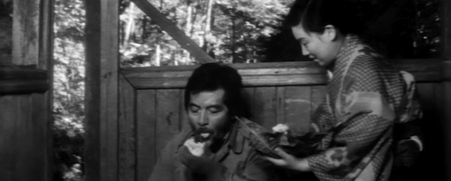
I suspect that this belief on the part of other reviewers stems partly from the character’s unprepossessing appearance at the beginning of the movie, in which he is unshaven and wears ragged clothes, and from his uncouth behavior, such as talking while eating. (Interestingly, the wealthy businessman Tarumi’s manners seem impeccable, as if wealth had totally transformed Inukai’s behavior.) Some critics don’t seem to realize that in the complete collapse of the economy after the war, many previously respectable, hardworking Japanese men became tramps much like Inukai, often wearing their army uniforms as their only clothing, just as many “nice” women turned to prostitution to survive. Inukai’s unattractive but hardly violent demeanor during the opening scenes appears to have prejudiced many English-language reviewers against the character.
Furthermore, Inukai is capable of acts of exceptional generosity. His sharing of Numata’s cigarettes with the old woman on the train prefigures his much more impressive gift to Yae, when he leaves a huge tip for her services. Much later, as Tarumi, he will publicly offer a fortune to a fund to help rehabilitate convicts, resulting in his photo appearing in a newspaper, where, unfortunately, Yae sees it. The blogger for Japanonfilm wittily points out that this narrative is a good example of a common Japanese narrative trope in which “no good deed goes unpunished.” In this case, though, two good deeds are punished: his gift to Yae and his impressive donation for the benefit of those who have run afoul of the Japanese criminal justice system… as he himself is about to do.
Near the end of the film, as Inukai is riding on the train with the detectives, he recalls, in his sleep, Yae calling him a “nice guy” on the local train to Ōminato. This is ironic – and yet, in a sense, it isn’t. Beneath his neurotic tics and hair-trigger capacity for violence, there is much that is good in Inukai, at least as Uchida and Mikuni portray him. A Fugitive from the Past is ultimately a tragedy of misperception: the illusions of a prostitute, who imagines him to be completely good, and those of an obsessed detective (Yumisaka), who believes him to be completely evil, combine to lead to Inukai’s moral and physical destruction.
(Continued on Page 4)
[…] Japanonfilm blogger appears to see A Fugitive from the Past, in its focus on social issues, as an outlier among Uchida’s postwar films. I would argue the […]